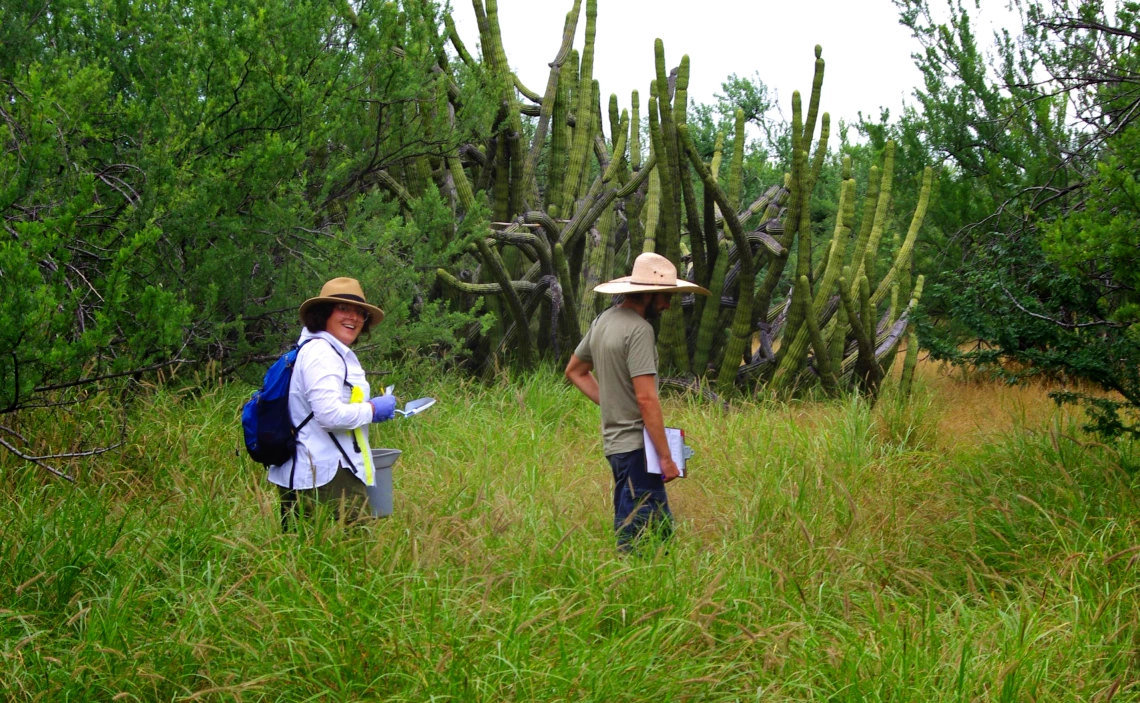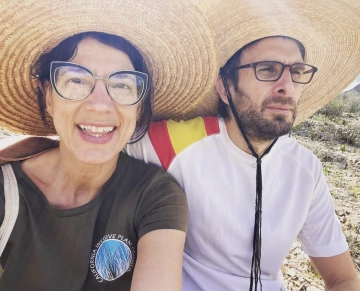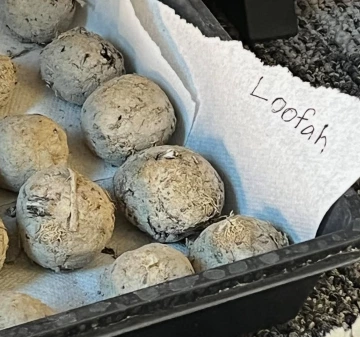A spark of hope: Boosting nature’s recovery after fire
University of Arizona researchers are exploring how ecosystems recover after wildfires—and how we can bounce back better.

Researchers assessing canopy effects on buffelgrass in Hermosillo, Mexico.
Albert Balberán
Picture a hot desert landscape chock-full of dry plants that don’t belong there. That’s fuel for some very intense fires. When fire scorches the land, it also doesn’t just burn the landscape above ground—it messes with the whole ecosystem, down to the microbes in the soil.

Elise Gornish and Albert Barberán
But a team of ecology restoration experts at the College of Agriculture, Life and Environmental Science is getting their hands dirty to help ecosystems come back stronger. Albert Barberán and Elise Gornish—science soulmates and spouses—are digging deeper. Literally.
Fueled by a grant from the National Science Foundation Division of Environmental Biology, Barberán and Gornish will be zeroing in on how wildfire and invasive plants tag-team to disrupt soil microbial ecosystems.
“The normal approach has always been to try to deal with this from the above-ground perspective.” said Barberán, an associate professor at the Department of Environmental Science. “But more and more, we’re realizing that if we don't incorporate what happens in the soil, we don't get a complete picture and we’re missing out on potential solutions.”
The secret life of soil
Soils are teeming with microorganisms such as nitrogen fixers, which are comprised primarily of bacteria that convert atmospheric nitrogen into a form that plants can use. Bacteria, fungi, viruses and other microorganisms all interact with plant roots and decaying organic matter to recycle nutrients, stabilize the soil, and even influence which plants can grow.

Seedballs are typically made of clay, compost, water and seed, and can ameliorate conditions that contribute to failure in arid land restoration
“This way, folks who are in a fire-damaged area can have a better understanding of what's going on in the soil so they can make a better management plan,” said Gornish, an associate professor at the School of Natural Resources and the Environment. “For example, if you're losing all of your nitrogen fixers after a fire, then you can grow plants that you know cultivate nitrogen fixers.”
One of their most promising tool concepts will be the seedball. The small pellets will combine native plant seeds with specific types of soil—selected for their microbial and chemical properties—to kickstart the recovery process. It’s a strategy to help restore what was lost - and to improve the land’s ability to resist future damage.
Gornish and Barberán’s project will also have a strong outreach and education component. The research team will share its findings with land managers through workshops, bilingual publications and the EcoRestore digital portal, helping ensure that management decisions are rooted in the latest science.
